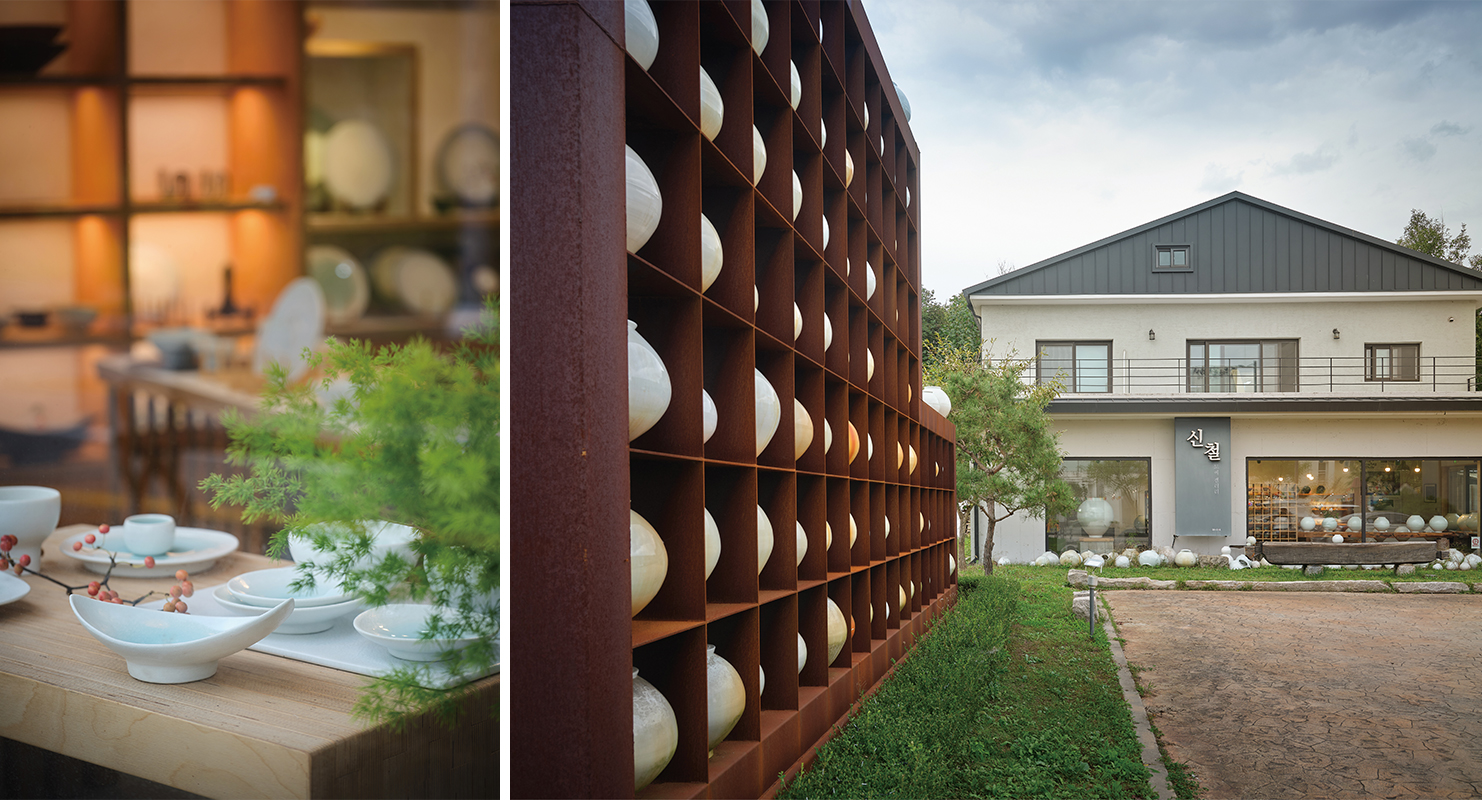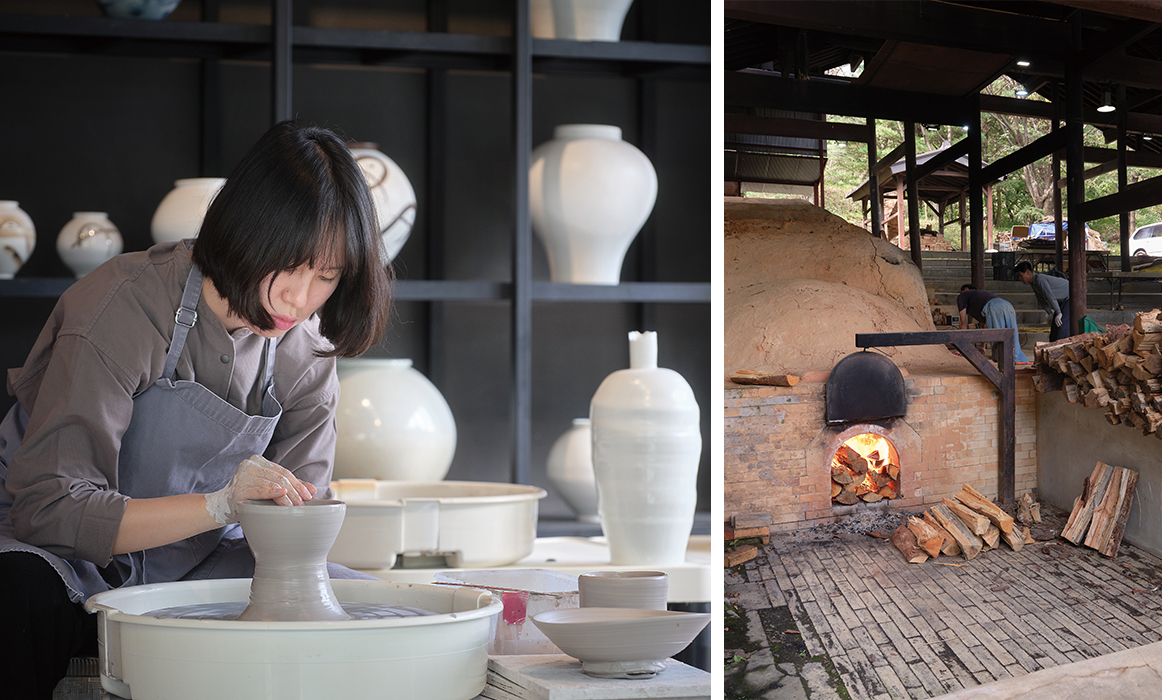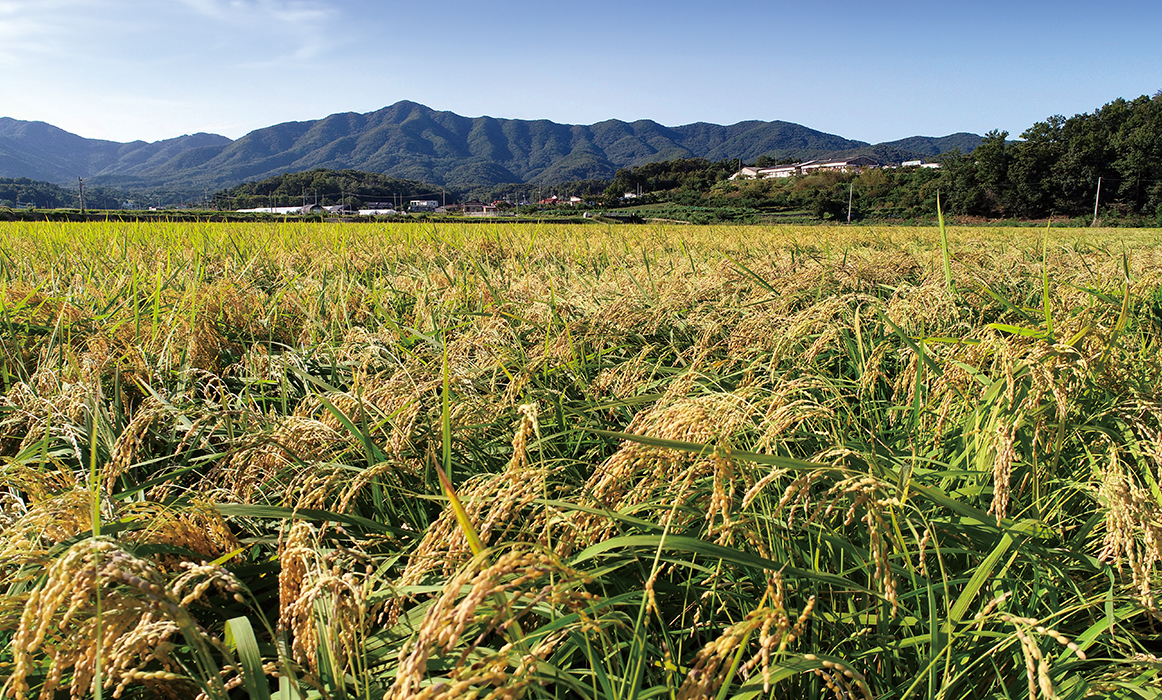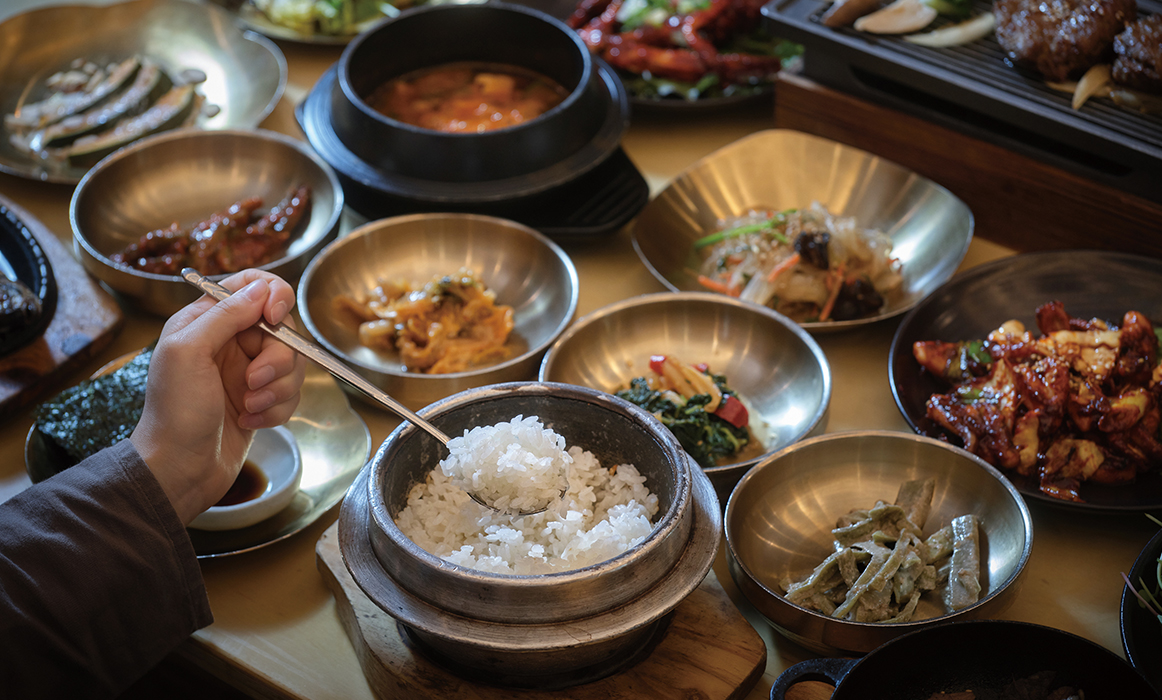
The season of ripening grains—a journey begins to fill the quiet spaces of life. Just an hour from Seoul by public transport, Icheon reveals itself, a city brimming with artistry and abundance. A place where senses awaken, where every heartbeat feels alive.
곡식이 영그는 계절, 삶의 여백을 채우기 위해 길을 나선다. 서울에서 대중교통으로 1시간이면 닿는 그곳에, 공예로 빚어진 풍요가 가득하다. 오감과 마음이 모두 깨어나는 도시, 이천이다.
Writer. Hye Kyeong Sung
Chilly breezes sweep across the fields, turning Icheon golden. Leaves flutter in the air like delicate embroidery, rice bends under its weight, shimmering in waves of amber. After passing through breathtaking scenes, workshops appear, their pottery displayed at doorsteps as if quietly greeting each visitor. It’s a sign that the journey has reached Icheon Ye’s Park (Icheon Ceramics Village), ready to make this autumn even more meaningful.
Long intertwined with ceramics, Icheon has nurtured master artisans for centuries. Since the Joseon Dynasty (1392-1910), earthenware has been the pride of the city, and even after the Korean War (1950), kiln sites survived, becoming the home for generations of potters. Today, over 400 skilled workshops thrive, an annual ceramic festival celebrates creativity, and the city has been recognized as a UNESCO Creative City, earning its reputation as the “heart of Korean ceramics.”
 Ye’s Park houses more than 200 workshops, many of which also serve as showrooms, making it easy for visitors to browse ceramic products and artworks.
Ye’s Park houses more than 200 workshops, many of which also serve as showrooms, making it easy for visitors to browse ceramic products and artworks.
Icheon Ye’s Park embodies this legacy. From the moment of entering, eyes are drawn to creations shaped by hands and imagination: elegant jars with flowing lines, bowls with mysterious glazes, sculptural works that reveal a world of vision and story—treasures of light shaped from clay fill the village. Strolling along narrow paths by a quiet stream and through lanes that stretch into every corner, galleries of flat paintings, collections of antique furniture, lacquer workshops and Hanji (traditional Korean paper) studios unfold to reveal a world where diverse forms of art coexist in harmony.
Wandering through narrow lanes, a turn into a small atelier opens the door to a special moment. A chance to create a personal piece with the guidance of the artist. First, a demonstration on the wheel shows how to shape clay into a smooth form. Then comes the hands-on experience, breathing life into the clay. Centering, pulling, feeling its thickness, molding it into a wide bowl or a slender cup, focus deepens as the moist clay transforms under gentle touch. Hours slip by unnoticed. The piece will be fired at the studio and sent by courier, a promise to meet again. Walking out, a sense of having conversed with the clay, of having touched one’s own inner world, leaves the heart light and deeply satisfied.
A visit to the Gyeonggi Museum of Contemporary Ceramic Art lets the history and trends of modern ceramics unfold. The museum features the permanent exhibition “Odyssey of Contemporary Ceramic Art” and the special exhibition “HOMO CERAMICUS.” Stepping into “Odyssey of Contemporary Ceramic Art,” the elegance and refined spirit of Korean artisans since the 1930s immediately fills the air. Moving through the galleries, works by international artists reinterpret the materiality of clay with freedom and imagination, inviting deep reflection and admiration. Following the permanent collection exhibition comes “HOMO CERAMICUS,” where the life of ceramicists as humans working with clay comes alive. Moments of creation and the results of breathing with the clay are expressed through artworks and videos. It becomes clear that a ceramist is not just a maker of vessels but a communicator of ideas, a thinker, constantly reflecting on society and oneself. Leaving the museum, a profound realization emerges: ceramics can be endlessly diverse, capable of conveying countless messages and standing as a powerful, expressive art form.
 (Left) Many pottery studios in Icheon offer hands-on programs where visitors can make their own ceramics. Reservations are simple to arrange in advance.
(Left) Many pottery studios in Icheon offer hands-on programs where visitors can make their own ceramics. Reservations are simple to arrange in advance.
(Right) Some studios in Icheon continue to use traditional kilns, such as the one at the Gyeonggi Museum of Contemporary Ceramic Art, which also hosts kiln workshops and programs.
쌀쌀한 기운을 품은 바람이 대지를 스칠 때마다 이천은 노란빛으로 물든다. 가지 끝에 달린 잎은 공중을 수놓고, 고개 숙인 채 노랗게 익은 벼들은 황금 물결로 일렁인다. 경이로운 정경들을 몇 번 지나면, 어느 순간 도자기들을 집 앞에 내놓은 공방들이 하나둘씩 나타나 인사를 건네기 시작한다. 이 가을을 더욱 의미 있게 만들어 줄 이천도자마을에 다다랐다는 의미다.
이천은 도자와 연이 깊다. 조선시대 때부터 이천의 특산품은 도기였고, 한국 전쟁을 거친 후엔 가마터를 보존한 유일한 도시가 되어 도자 명장들이 자리를 잡은 곳이었다. 그 결과, 이천은 400여 개가 달하는 공방을 보유하고, 일 년에 한 번 도자기 축제를 열고, 유네스코 창의 도시로 선정되며 ‘한국 도자의 중심’이 됐다.
이천도자마을은 이러한 이천의 정체성이 깃든 곳이다. 마을 입구에 들어서는 순간부터 자연스레 시선을 끄는 도예 작품들이 펼쳐진다. 선이 유려한 항아리, 오묘한 유약 빛이 매력적인 그릇, 작가의 세계관이 돋보이는 조형 작품까지, 흙으로 빛은 보석들이 가득하다. 고요한물줄기가 흐르는 작은 천 곁에 난 길과 마을 구석구석 뻗은 길 따라 걷다 보니 평면 회화를 다루는 갤러리, 고가구가 모인 갤러리, 옻칠 공방이나 한지 공방과 같은 다양한 예술의 세계가 공존하는 것이 느껴진다.
골목을 누비다 한 공방으로 들어가 특별한 시간을 가져본다. 작가의 도움을 받아 나만의 작품을 만들 기회다. 물레를 돌려 매끈한 형태의 기물을 만들 수 있도록, 맨 처음에는 작가가 시범을 보인다. 이윽고 본 것을 토대로 흙과 직접 호흡하는 시간을 가진다. 흙의 중심을 잡거나 끌어올리는 작업, 흙의 두께를 만져가며 모양을 잡는다. 넓은 면기형태로, 좁은 컵 형태로 이리저리 만져가며 촉촉한 흙이 모습을 바꿔 가는 과정에 집중하다 보니, 어느새 시간이 훌쩍 지났다. 작품은 공방에서 구운 뒤 택배로 보내준다고 하니, 나중에 만나기로 기약한다. 흙과 호흡하고 내면과 대화한 듯한 기분이 든다. 공방 문을 나서는 마음이 한결 산뜻하고 흡족하다.
도자 예술을 다루는 경기도자미술관을 찾는다. 현대 도예의 역사부터 경향까지 살펴볼 수 있는 공간이다. 이곳에서는 상설전 ‘현대도예· 오디세이’와 기획전 ‘호모세라미쿠스’를 진행 중이다. 기대감을 품고 ‘현대도예·오디세이’ 전시관에 입장하는 순간, 1930년대 이후 한국 장인들의 작품에 새겨진 단아한 정취가 감돈다. 이어지는 섹션에서는 발상과 인식의 전환으로 흙의 물성을 자유롭게 해석한 세계 작가들의 작품을 마주하며 감상에 젖는다. 소장품 상설전시에 이어 기획전 ‘호모 세라미쿠스’관에 입장하니 ‘흙을 다루는 인류’로서의 도예가들이 흙과 호흡하며 살아가는 순간이 작품과 영상으로 다가온다. 도예가가 단순히 기물을 만드는 사람이 아닌, 흙을 통해 사회적 메시지를 담아내며 자신을 끊임없이 성찰하는 존재라는 것이 느껴진다. 모든 전시를 보고 나오는 순간엔, 도자가 얼마나 다원화될 수 있는지, 얼마나 많은 메시지를 담아낼 수 있는 예술 매체인지 새삼 깨닫게 된다.
As the artistic journey in Icheon comes to a close, a stop is made at Rice Street on the eastern edge of the Icheon Ye’s Park. Curiosity about another pride of Icheon, its rice, leads the way. In Korea, Icheon brings to mind not only ceramics but also its rice, celebrated for its quality and flavor. Clean water and clay-rich soil, spread widely across the region, nourish the grains even through their final growth stages. The basin-like terrain brings wide temperature swings between day and night, creating the perfect environment for rice to thrive, ensuring every grain is packed with flavor.
 © Icheon City.
© Icheon City.
Passing through peaceful rice fields busy with the harvest, anticipation builds for a meal made from these locally grown grains. Hurrying to a nearby restaurant, where every place seems to feature hanjeongsik (Korean Table d’hote) centered on Icheon rice, a table is chosen. Side dishes, soup, grilled fish, tender meat—soon the table is full, almost overflowing. Yet the steaming white rice steals the attention first. Scooping it into an empty bowl, adding water to the stone pot for nurungji (scorched rice), each bite savored alongside the thoughtfully prepared side dishes reveals the authentic flavor of Icheon.
Heart and body nourished, leaving Icheon brings a quiet sense of wonder and fulfillment, as if stepping into the season of harvest itself. The textures felt, sights admired, flavors savored, linger in memory, a gentle nourishment to carry forward into life ahead.

이천에서의 예술 여행을 마치며 집으로 가는 길, 이천도자마을 동쪽 끝 무렵에 있는 쌀밥 거리를 들른다. 이천을 탐방하다 보니 이천의 또 다른 자랑거리인 ‘쌀’이 궁금해졌기 때문이다. 한국 사람들이 ‘이천’하면 떠올리는 것 중에는 ‘도자기’ 말고도 ‘쌀’이 있다. ‘이천 쌀’이 품질 좋고 맛 좋기로 유명하기 때문이다. 이천은 물이 깨끗하고, 지역에 널리 퍼진 점토 함량이 높은 흙은 쌀의 생육 후기까지 영양을 충분히 공급한다. 또한 분지 지형이라 계절과 밤낮의 기온차가 무척 큰데, 이것이 쌀에는 좋은 환경이라 이천의 쌀 맛은 좋을 수밖에 없다는 것이다.
추수가 한창인 이천의 평화로운 논을 보니, 이천에서 나고 자란 것들로 만들어진 밥이 괜히 더 달 것만 같아 서둘러 식당으로 이동했다. 이곳의 식당들은 약속이라도 한 듯, 모두 이천 쌀을 기본으로 한 한정식을 선보인다. 가장 마음에 드는 식당을 골라 식사를 주문하니 금세 손가락으로 새도 모자랄 정도의 반찬이며 국, 생선구이나 고기와 같은 메인 음식들이 한 상 가득 나온다. 그러나 그중에서도 고슬고슬 지어진 하얀 쌀밥이 가장 구미를 당긴다. 하얀 밥을 빈 그릇에 덜고 솥에 물을 넣어 누룽지를 만드는 동안, 정성스레 나온 반찬과 밥 한 숟갈을 입에 넣으며 이천의 맛을 충분히 즐긴다.
마음도 몸도 넉넉히 채우고 돌아가는 길, 이천에 와서야 비로소 결실의 계절을 맞이한 듯한 생경함과 뿌듯함이 밀려온다. 손으로 만지고, 눈으로 보고, 입으로 맛본 농도 깊은 감각과 추억이 앞으로의 삶에 잔잔한 양분으로 스며들 것 같다.